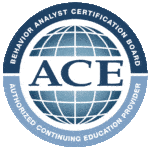Making the Back-to-School Transition a Little Smoother
By: Tara Karen, M.S. Ed, BCBA, LBA Achieve Beyond-Director of Behavioral Services

With September fast approaching, we are all anxiously awaiting the first day of school! The beginning of the school year brings on a host of challenges for both children and parents alike: obtaining school supplies, scheduling after-school activities, checking homework, making friends, strict bedtimes, and meeting new teachers. These all will cause some anxiety for children and parents. When a child has a disability, these challenges may become overwhelming for children and their parents, which may lead to an increase in “problem behaviors.” Below are a few of the strategies we can use in order to relieve the stress of back-to-school and make the transition easier for our kids and for ourselves.
Spending a little time before school starts getting organized will save a lot of time and frustration once school begins. A family calendar, placed in an area where everyone can view it, will help to keep track of appointments, recreational events, tests, and school meetings. This can ease some anxiety by providing a visual reminder of events to come while also creating opportunities to talk to children about upcoming events. Sometimes we hear that conversing with children is difficult, so talking about an upcoming birthday, field trip, holiday, or activity will create daily opportunities to expand communication.
The first few weeks of school also come with a lot of paperwork! In the beginning of the school year, designate folders for IEPs, permission slips, and school communication, or create a binder with this information. This way you can reference all documents quickly and easily when needed. It is also important to note that you should always read through your children’s IEPs or 504 plan before the beginning of the school year in order to familiarize yourself with it: make sure that your child is receiving all the services and test accommodations listed. In the beginning of the year, reach out to the teacher and all related service providers (speech, OT, PT) to introduce yourself and begin communication. If possible, start a communication book or log- either in a notebook or through email.
Children with disabilities are also usually greatly affected by changes in routine, and the change from summer to school is definitely a huge transition! It is important to try to assemble some daily routines at home before the school year begins. Morning and after-school routines help children because they will know what is coming next, which can be a relief when the great unknown of a new class, teacher, and material are coming. By working on the routine before school begins, children will also know what is expected of them every morning and this may reduce the amount of crazy mornings scrambling for the bus! Routines could include teaching children to make their own breakfast, pick out clothes, putting away their backpack, or putting on/taking off shoes. Every child, no matter what age or ability level is able to perform tasks and follow routines. A visual schedule or checklist could help to assist children in completion of these routines. While it may initially take a long time for children to complete the routines independently, if started during the summer, many children will learn to complete morning and afternoon (or evening) tasks quickly and independently. Completing these tasks independently will also give your child confidence and free up some time for you to interact with them more.
When children begin school, they lose a lot of the freedom they had during the summer, and this too may cause an increase in problem behavior. We sometimes forget that giving children the opportunity to make choices (about a sport to try, what to eat for dinner, which assignment to complete first, or even what color pencil to use) will give children a sense of control while also promoting a positive relationship with you. When a child is motivated, they are more likely to work harder and exhibit less problem behavior. Implementing a token or reward system might also be a tool to use in order to increase homework completion, direction-following, or completing chores.
During the rush of back-to-school season, when we shuffle between work, school, and extra-curricular activities or therapies, it is easy to forget to check in with our children and listen to them. Take the opportunity to talk to your children during these car rides or before bedtime and help to alleviate some fears and anxieties. Ask them questions about their day, even if it is what they ate for lunch. Give them choices for meals or weekend plans. Look at the calendar with them and talk about upcoming events. Look for non-verbal signs of stress and work on ways to help your children express themselves. While it is an important factor to keep organized and use behavioral strategies to assist children in the back-to-school transition, the most important factor is to be there for your children, and to love them! If you do see an increase in undesirable behaviors or your child voices their concerns, do your best to understand the difficulties they are facing, and ask for help if you need it. Your child’s teacher, home staff, and/or BCBA are great resources that are here to help your child and family transition to school smoothly. Best of luck this school year!!
Date Posted:
August 27, 2015
Share this blog
Categories
Recent Blog Posts








